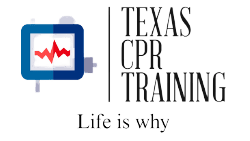
How is Sudden Cardiac Arrest Treated?
Sudden Cardiac Arrest (SCA) requires immediate medical attention as it involves the most dangerous episode of stopped heartbeat. At that time nothing is more important than bringing a dead heart back to life. SCA occurs silently without any evident indications making a person collapse instantly without giving any chance to communicate the condition. Sudden Cardiac Arrests (SCA) happens due to the abnormal response of muscles present in the heart towards heart’s electrical signals. The ventricular fibrillation and arrhythmia needs to be urgently overcome in order to resume the heart beat. You can save a SCA victim by providing them with the following treatment instantly. As SCA can occur at anytime and anywhere, the type of treatments are classified in to two categories, out-of-hospital and in-hospital.
Out-of-hospital Treatment for SCA:
#1: CPR
The sudden condition of SCA needs instantaneous aid in the form of help to the heart to breathe adequately. If a person encounters SCA, people nearby can observe him collapse or lying unconscious on floor. In such situations, people who know CPR can be heroes or life-saviors by carrying out an effective Cardiopulmonary resuscitation (CPR). CPR consists of 3 basic steps, calling 911, pumping heart using hands to compress the chest, and blowing into the mouth to help the victim breathe. Generally, if done adequately, the heart catches its normal rhythm back soon and the person is set free from the cardiac arrest.
#2: Defibrillation
As the goal is to provide the patient’s heart with the vital electrical signals plus to make it respond to those signals sufficiently, it is imperative to supply the heart with defibrillation. Defibrillation basically aids in overcoming arrhythmia which is regarded as ventricular fibrillation. The fibrillation is one of the main reasons why heart stops and hence, to revive the heart, reversing the abnormal procedure is necessary. To incorporate the treatment, there must be the availability of Automated External Defibrillator (AED) which works by providing shocks to the cardiac muscles through electrode pads on the victim’s chest surface, generating crucial electrical impulses for the normal beating of the heart.
In-Hospital Treatment of SCA:
#1: Inside the Emergency Room
Successfully surviving a deadly SCA and reaching an emergency room alive is an indication of good luck and fortunate circumstances. In an emergency room, medical staffs stabilize the situation further by providing certain medications to improve the rhythm of the heart beat and to prevent the patient from electrolyte imbalances and other situations such as heart attack and heart failure.
#2: Drugs
Doctors prescribe suitable medications and anti-arrhythmic drugs for the immediate and long-term treatment of arrhythmias and for normal functioning of the heart. This helps to prevent the patient from falling into a similar unpleasant situation in the near future.
#3: Surgery or Angioplasty
After diagnosis using several tests and equipments, doctors can reach the conclusion regarding the main cause behind SCA in the particular patient. If the reason is a Coronary Heart Disease (CHD), the patient can be suggested to go through a bypass surgery to unblock the clogging of vital arteries. Treatments of SCA can involve treatments of CHD, low ejection fraction, high cholestrol, diabetes, and other diseases that contribute towards SCA.
Sudden Cardiac Arrest Diagnosis
SCA and Heart Attack: Understanding the Difference
Sudden Cardiac Arrest: Why It Happens
Sudden Cardiac Arrest Association
Brough to you by Texas CPR Traininghttps://texascpr.com/
